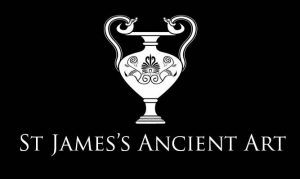Vessels were made in Ancient Greece in a wide variety of shapes and materials, for example bronze (such as this example), terracotta, glass, stone, wood, and more. They served a number of different purposes, including as funerary, votive, medicinal, or domestic items for washing or for holding wine, oils, water, and cosmetics. Bronze, as a alloy of copper, which was widely available in the ancient Mediterranean, tin, and sometimes lead, was a cheaper alternative to silver and gold. Thus, many more bronze vessels survive, buried in tombs or grave sites. Though often now covered by a green patina, most bronze vessels in antiquity would have had a golden sheen, with Pliny praising the bronze from Corinth in particular for its colouring.
To learn more about everyday bronze items in the Classical World, visit our relevant post: Everyday Items in the Classical World.








